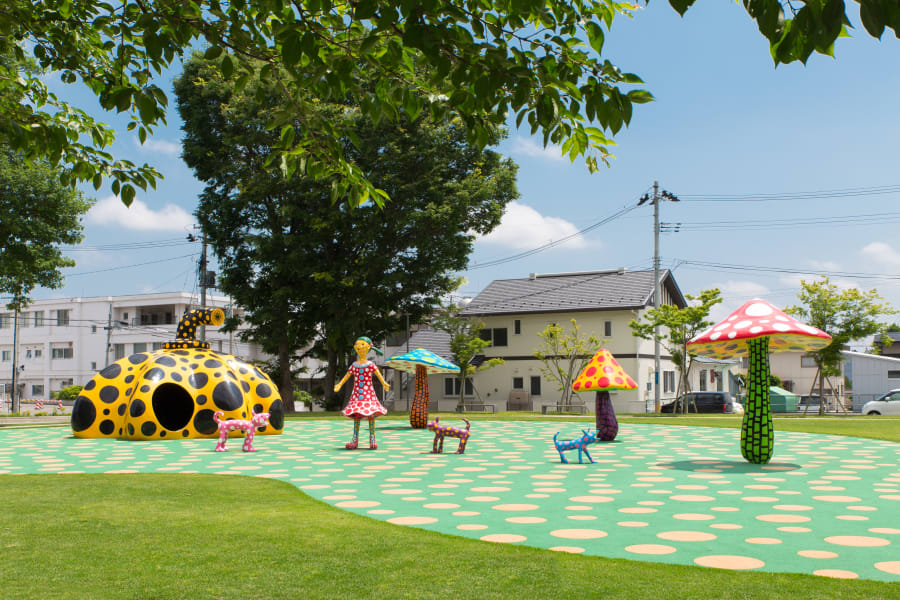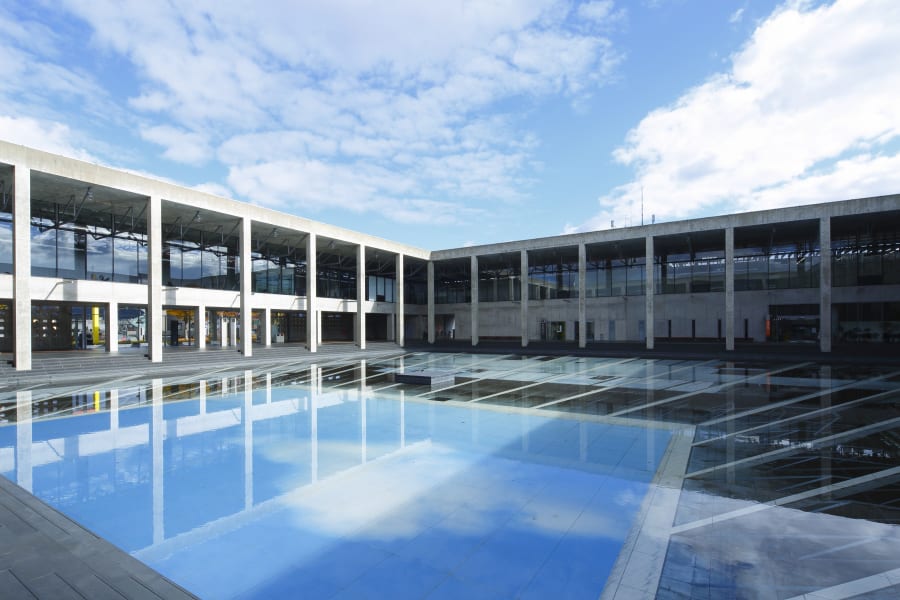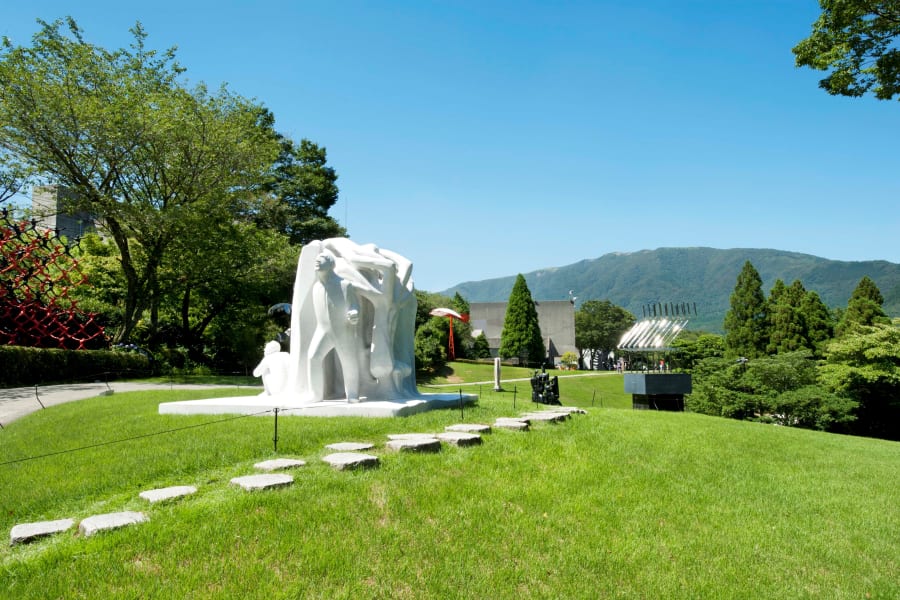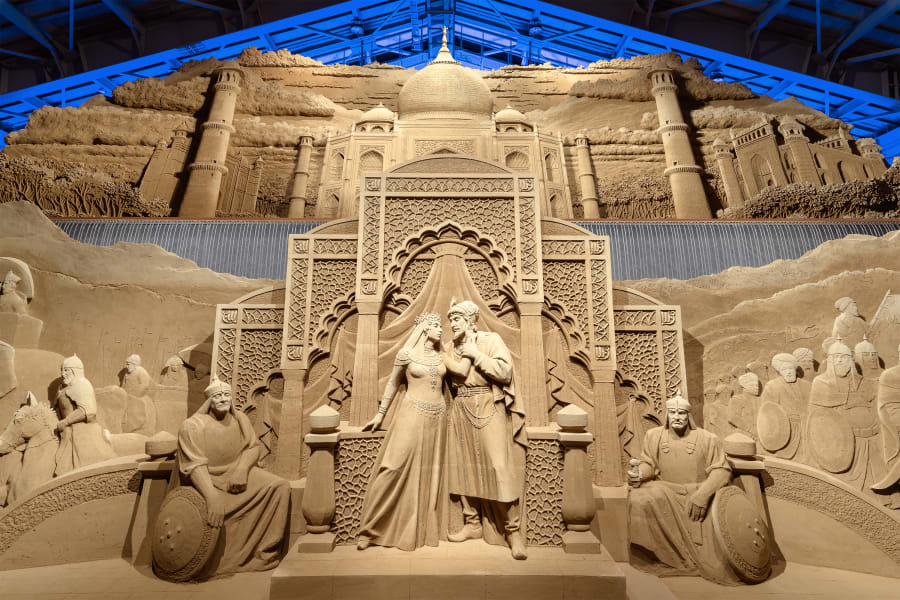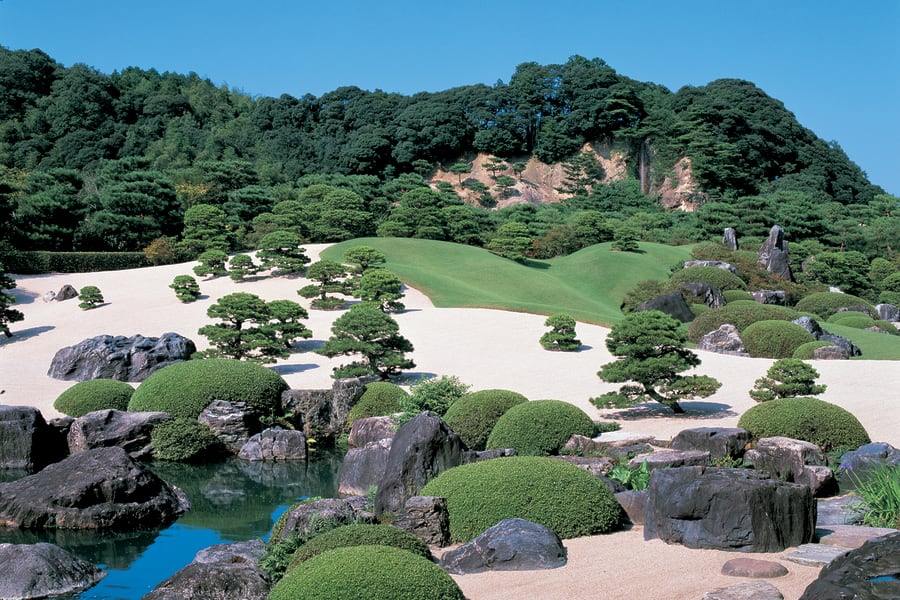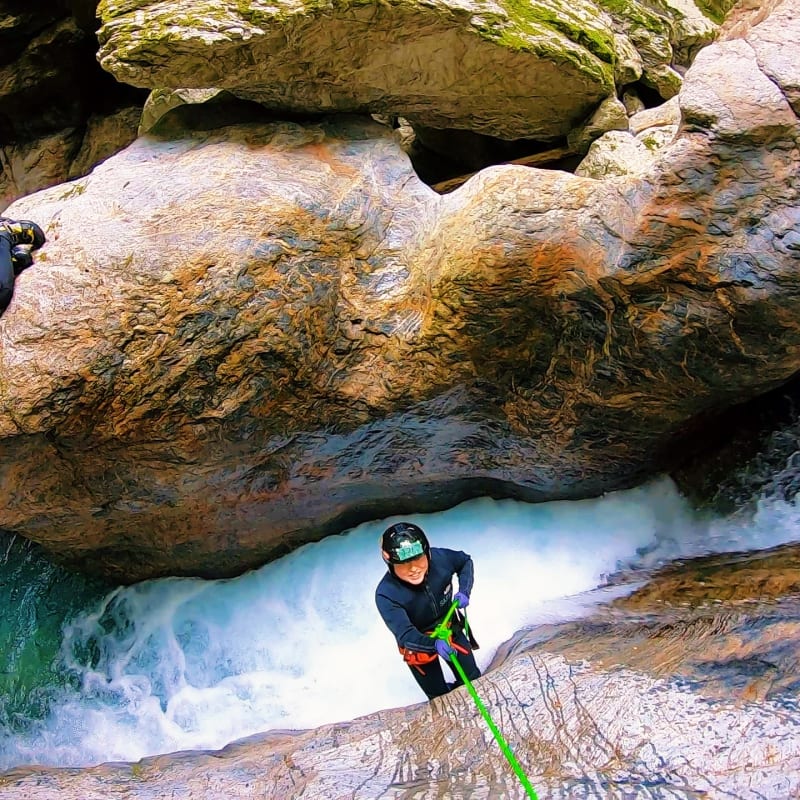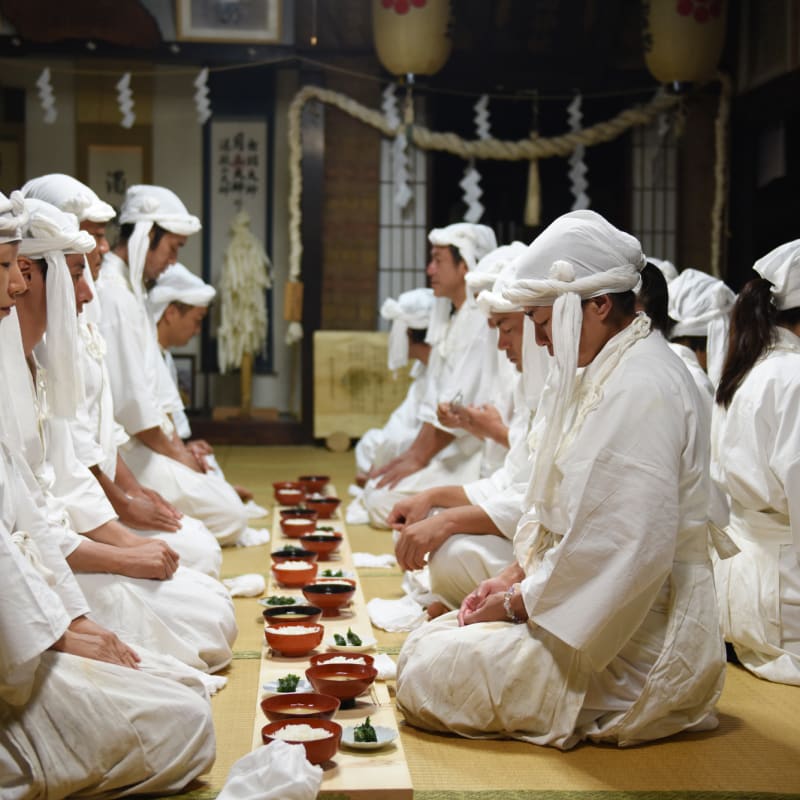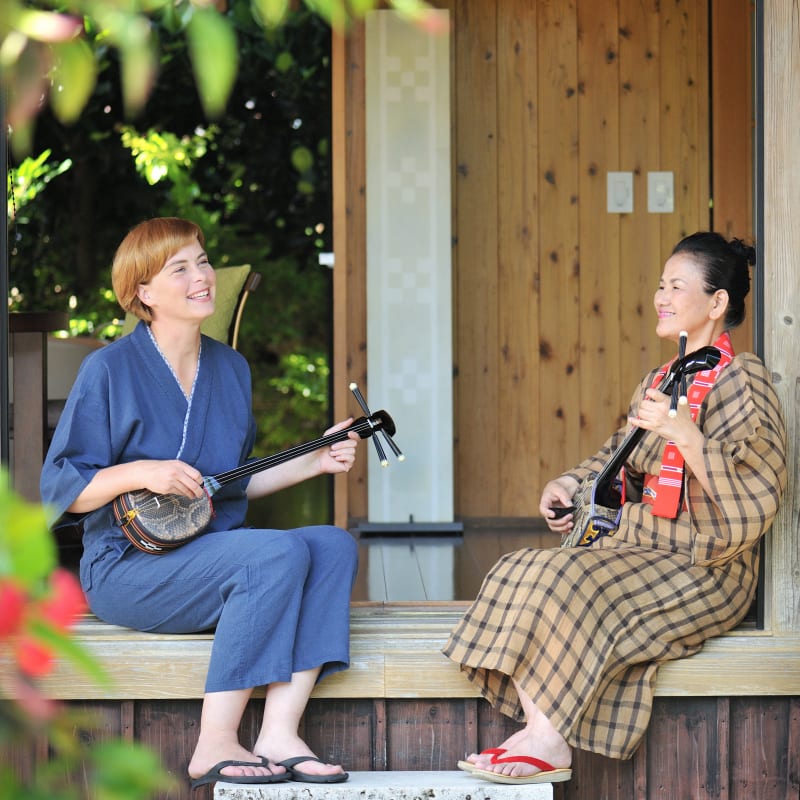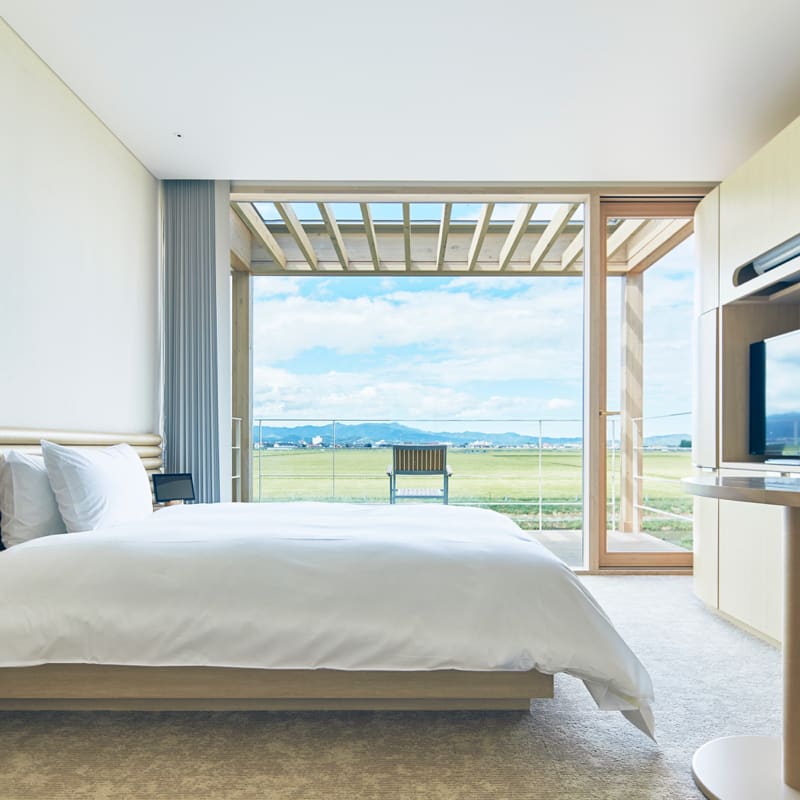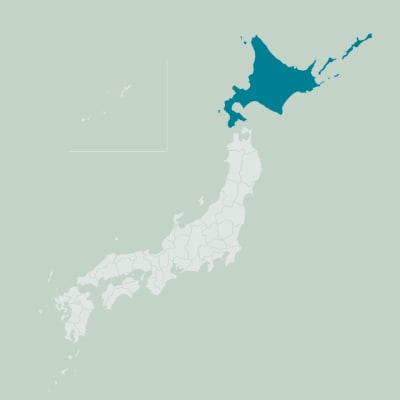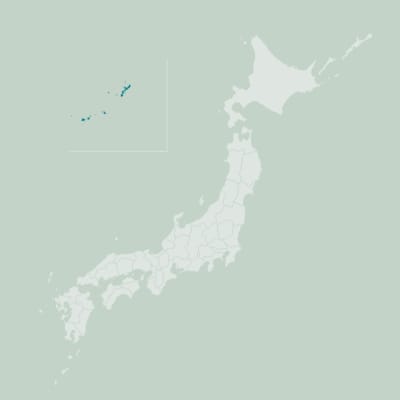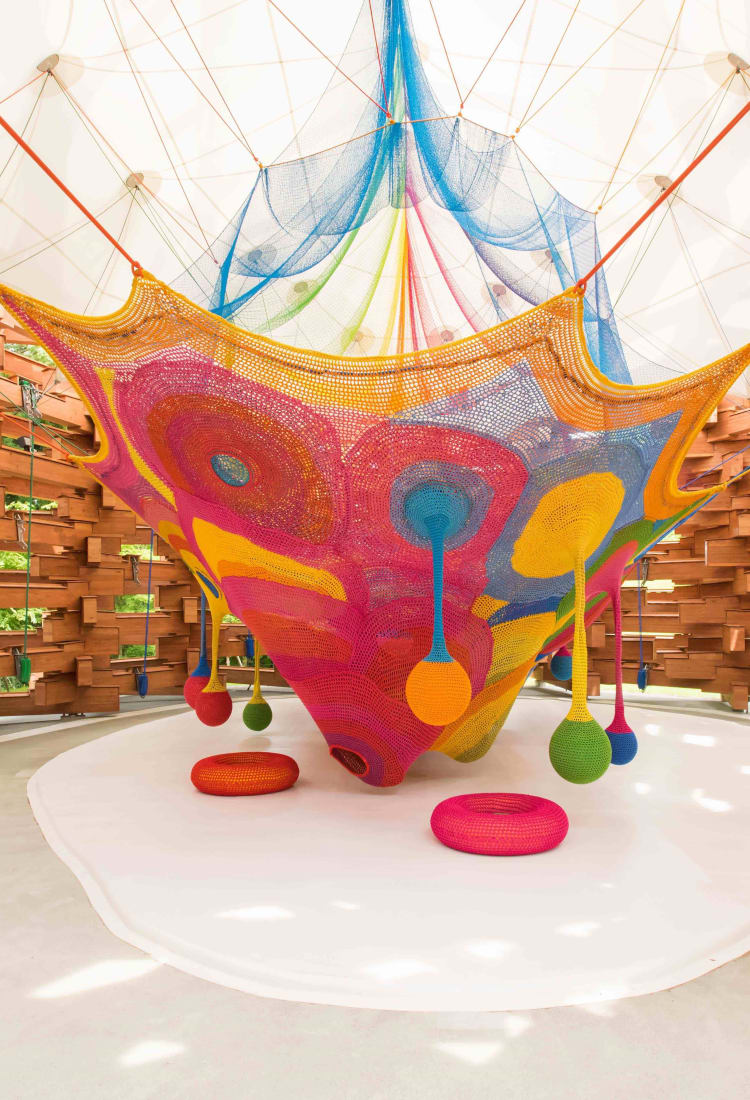
Highlighted Features Inspiration Awaits You at Every Turn: Discover the Indelible Art of Japan
ⓒ施設名:[Woods of Net] 作家名作品名:Toshiko Horiuchi MacAdam ‛Knitted Wonder Space 2’
From its time-honored traditions to its cutting-edge technology, Japan is where the past and present converge. Nowhere is this more evident than in the arts, where the creations of the human hand dare to challenge those of nature. The outdoors serves as a palette, providing artists from Japan and beyond with a lush backdrop for their creations, such as a manicured Japanese garden that takes in the surrounding views. Whether appreciating world-class sculpture displayed outdoors or engaging with indoor sand art exhibits, creativity is waiting to be discovered all around the country. The artworks introduced in this article have been curated from all over the world, as well as Japan, with art enthusiasts of all ages in mind. You may find some fresh ideas to enjoy experiencing the amazing art and nature with your family and friends.
Nature and Art Beat with the Same Heart
Behold natural and artistic beauty in Aomori
ⓒKUSAMA Yayoi 《Love Forever, Singing in Towada》 photo : OYAMADA Kuniya
A giant neighing horse made of colorful flowers, a park full of polka-dotted characters and a larger-than-life statue of a woman: these are among the charming, unique and thought-provoking works that greet visitors to Towada Art Center. Located in Aomori Prefecture, the northernmost part of Japan’s Tohoku region, Towada Art Center welcomes arts enthusiasts of all ages to its sleek, modern facilities, housing works from paintings to sculpture, displayed both indoors and in the open air.
At this world-class modern art museum in the heart of scenic Aomori, the permanent collection boasts approximately 40 works by about 30 international artists. In the fresh, open air of Towada, contemplate works by renowned artists from Japan such as Yoko Ono, who dedicated a tree to Towada and a bell to peace, and Yayoi Kusama, creator of the polka-dotted park. See how they complement the works by international artists such as Choi Jeong Hwa, designer of the Flower Horse, and Ron Mueck, sculptor of the giant woman. Color, scale, form and function are given equal weight in the design of the museum. Take time to meander through the abundant works of art and architecture that were designed and created especially for Towada Art Center. After experiencing all there is to see and do at Towada Art Center, stroll down the Government Offices Street, where more art and architecture have earned it a place among a top 100 ranking of streets in Japan.
Highly rated by Western visitors on a famous travel advice website, Towada Art Center, where nature and art beat with the same heart, is sure to appeal to all kinds of art enthusiasts, from singles and couples to families and friends. Filled with “relatable” art, the architecture of this facility, featuring a cafe and other conveniences, also impresses visitors. Inspiration awaits you at Towada Art Center in the heart of Aomori Prefecture.
Nature is the Backdrop for Art in Niigata
Art and nature mingle at a triennial event
ⓒレアンドロ・エルリッヒ「Palimpsest空の池」Photo by KIOKU Keizo
From Aomori in the far north of Japan’s main island, Honshu, head southwest to Niigata Prefecture on the Sea of Japan coast, then turn inward to its southeast corner.
Here you will discover Echigo Tsumari Art Field, where art meets nature on a grand scale in Niigata. Home to the Echigo-Tsumari Art Field, or ETAF, the natural surroundings of Tokamachi and Tsunan form the stage for about 200 works of art and architecture, spanning a 760 square-kilometer area. Held every 3 years from 2000, the ETAF invites artists and architects from all over the world to revitalize the region. They do this by creating works of whimsy in the heart of this area, one of Japan’s satoyama. Complementing the surrounding scenery, these permanent indoor and outdoor art displays beckon you to come and experience them at any time of year.
With a history dating back millennia, the Echigo-Tsumari region, divided into 6 areas encompassing about 200 villages, offers something unique and indelible for every type of art traveler. Designed to blend in with the natural beauty all around them, featured works include former schools turned into museums, lodgings and cafes; terraced rice paddies decorated with whimsical statuary, and a tunnel transformed into an infinity pool. Multilingual smartphone audio guides enable visitors from English-speaking countries to deepen their appreciation of these works and their creators, as well as the environment surrounding them. A key goal of this initiative is interaction between the local residents, young people from Japan’s cities, and overseas visitors. Workshops, events and exhibits help bring these diverse groups together here.
One regional focal point is the Echigo-Tsumari Satoyama Museum of Contemporary Art, MonET, located in Tsunan City. Constructed for the ETAF held in 2012, it now holds exhibits of contemporary art and much more. Quench your thirst at its onsite bar, appease your hunger at its restaurant, or even refresh yourself at its hot springs. Recommended for art lovers of every age, this museum is an ideal place to start your own journey of inspirational discovery through Niigata Prefecture, where art and nature mingle in unique fashion.
World-Class Sculpture in Wide-open Spaces
A national park forms the backdrop for art
Located about an hour away from Tokyo is Hakone, the next suggestion for your art tour of Japan. In this hot-spring resort town overlooking Sagami Bay, with views of Mount Fuji and its green foothills serving as a scenic stage, world-class works of art and natural splendor await at the Hakone Open-Air Museum. Creations of the human hand vie with those of nature to impress viewers with their beauty. Henry Moore, Auguste Rodin and Pablo Picasso are just some of the celebrated masters whose statuary, paintings and other works grace the surroundings in a park-like setting. A whole pavilion is dedicated to Picasso, housing a rotating collection of over 300 of his works. It encompasses a variety of media that Picasso used, such as paint, tapestry, ceramics, metalwork and sculpture. Picasso believed that “everything manifests itself in form”, and his lifelong pursuit of this goal, the transformation of material forms, can be seen through his development as an artist.
Sculpture is a key feature of the museum as a whole, with the magnificent nature of Japan’s Fuji-Hakone-Izu National Park providing the perfect backdrop for over 100 works decorating the landscaped gardens, extending 70,000 square meters. Photographers and social media posters will not lack for subject matter here. Take time to stroll at your leisure along well-maintained pathways. Those traveling with children will want to explore a colorful, structural piece made of hand-knit nets and balls located inside a lumber dome designed especially for them. A spiral staircase surrounded by a stained-glass tower offers ample exercise along with spectacular imagery from the top. Following such energetic exertions, you and your companions may wish to soak your feet in a foot bath filled with hot spring water bubbling underneath. Savor a meal at any one of the cafes or restaurants in the park, where you can take in the splendid scenery.
Recommended for art enthusiasts of all ages, the Hakone Open-Air Museum seamlessly blends the beauty of Japan’s spectacular nature with that of world-renowned artists. Easily accessible and walkable, with English explanations of the works you will peruse, this destination is ideally situated for a half-day trip outside of Tokyo, or it can be part of a longer stay in one of Hakone’s well-regarded hot-spring ryokans, traditional inns where you can experience omotenashi, the hospitality for which Japan is world-famous.
Temporary Exhibits of Timeless Treasures
Appreciate one-of-a-kind sand sculptures
From Hakone, travel west to the Chugoku region of Japan, where you and your companions can bask in the beauty of sand in Tottori. Located on the Sea of Japan side, the alluringly rugged coastline of Tottori Prefecture boasts a rare, undulating ocean of sand dunes, attracting beauty-lovers and nature-seekers alike.
Next door is the Sand Museum, which opened in 2012 as a venue to display magnificent works of impermanent art crafted out of this ever-shifting medium. By holding festivals showcasing the art he and his international network of sculptors produce, artist and curator Katsuhiko Chaen has put this museum on the art world map. Under the guidance of Chaen, childhood “sand play” forms the basis of amazingly elaborate sculptures, such as Mahatma Gandhi and The Love Story of Shah Jahan and Mumtaz , depicting the story behind the creation of the Taj Mahal. Incredibly complicated works made of nothing but sand and water are, by definition, ephemeral.
The beauty of sand sculpture is all the more impressive for its fleeting quality, since it eventually disintegrates. Themed exhibits are planned every April, and they usually last until the following January. Monuments, historical figures, architectural marvels: all are painstakingly crafted by hand from wooden forms in which the sand and water mixture is compacted to a pyramid of perfect sculpting consistency. Hands-on sculpting experiences appeal to children of all ages and the young at heart who wish to try their hand at creating this impermanent art, elevating the sand play of childhood to a thing of beauty to behold.
Visitors will be amazed not only by the prospect of carving in sand, but also by the fact that these works are so accessible. With no barriers surrounding the works, you may feel a temptation to reach out and touch them, but please do not. This type of display enables photographers and social media posters to get up close for the ideal shot of these masterpieces. Read the informative explanations beside each work and let yourself be awed by their grand scale and meticulous attention to the tiniest detail.
Nighttime illuminations lend it a special quality. Completely covered from the elements, this glass-walled museum offering views of the Tottori Sand Dunes is a must for lovers of nature and art alike. Bring your camera and your inner child to come and play with sand at a one-of-a-kind facility that appeals to travelers of all ages.
Appreciate Art in a Magnificent Japanese Garden
Splendid landscapes envelop a museum in Shimane
ⓒAdachi Museum of Art
From Tottori, venture westward to Shimane, where you will encounter the Adachi Museum of Art, enveloped by a magnificent Japanese garden, voted as the best Japanese garden in the world. It received this top distinction from the Shiosai Project, where about 30 global garden experts rank about 1,000 public Japanese gardens in terms of visitor support, the balance between a Japanese garden and its architectural surroundings, and the beauty of the garden itself.
This garden stands out from so many other Japanese gardens in what it does not allow you to do: stroll through it. To keep the carefully maintained gardens in their immaculate condition, you may view it only through windows and curtains thoughtfully designed to enhance the outdoor scenery. The five gardens on the premises, extending 165,000 square meters, were all constructed to blend in with the natural environment. Traditional Japanese garden types such as landscape, pond and moss gardens are on display here. Unique to the Adachi Museum of Art are gardens with white sand pathways threading through rare red pine trees and a reconstruction of Nachi Waterfall, both of which were modeled on artworks by Taikan Yokoyama.
You may be curious as to why the museum features so many works by this artist, who depicted natural treasures such as Mount Fuji in over 1500 of his paintings. Another question to ponder is why it is located in Shimane. The answers come from founder Zenko Adachi, a local real estate magnate with a rags-to-riches story. Adachi created this splendid garden in 1970 to communicate to visitors that through the appreciation of his extensive Yokoyama collection and other works by painter Tomioka Tessai, as well as impressive ceramics by masters such as Kitaoji Rosanjin and Kawai Kanjiro, they could be “moved by beauty”. It must be seen in person to be truly appreciated.
Nature and art perfectly complement each other here. The four distinct seasons of the San’in region are honored by both the works that are displayed on the walls and the garden itself, which can be appreciated indoors in all seasons. Adachi spent the last two decades of his long life creating a harmonious relationship between what is natural and what is not, succeeding to the point of making a “living Japanese painting” out of this garden.
Savoring a cup of matcha green tea in the teahouse is another memorable way to enjoy the garden. You may even be allowed to step outside to take photos of the gorgeous scenery there. Any season is a wonderful time to visit the museum and its five grand gardens, from the cherry blossoms of spring and the verdant leaves of summer to the blazing foliage of autumn and the downy snows of winter.




























































